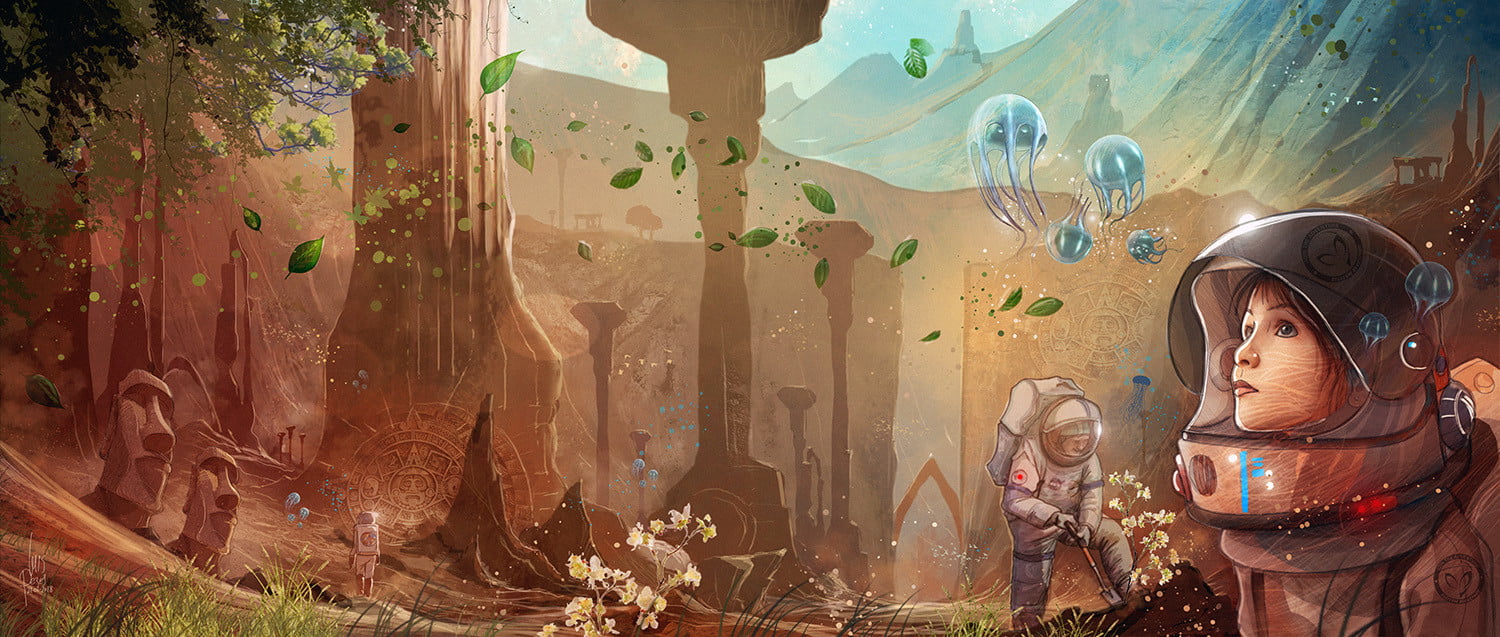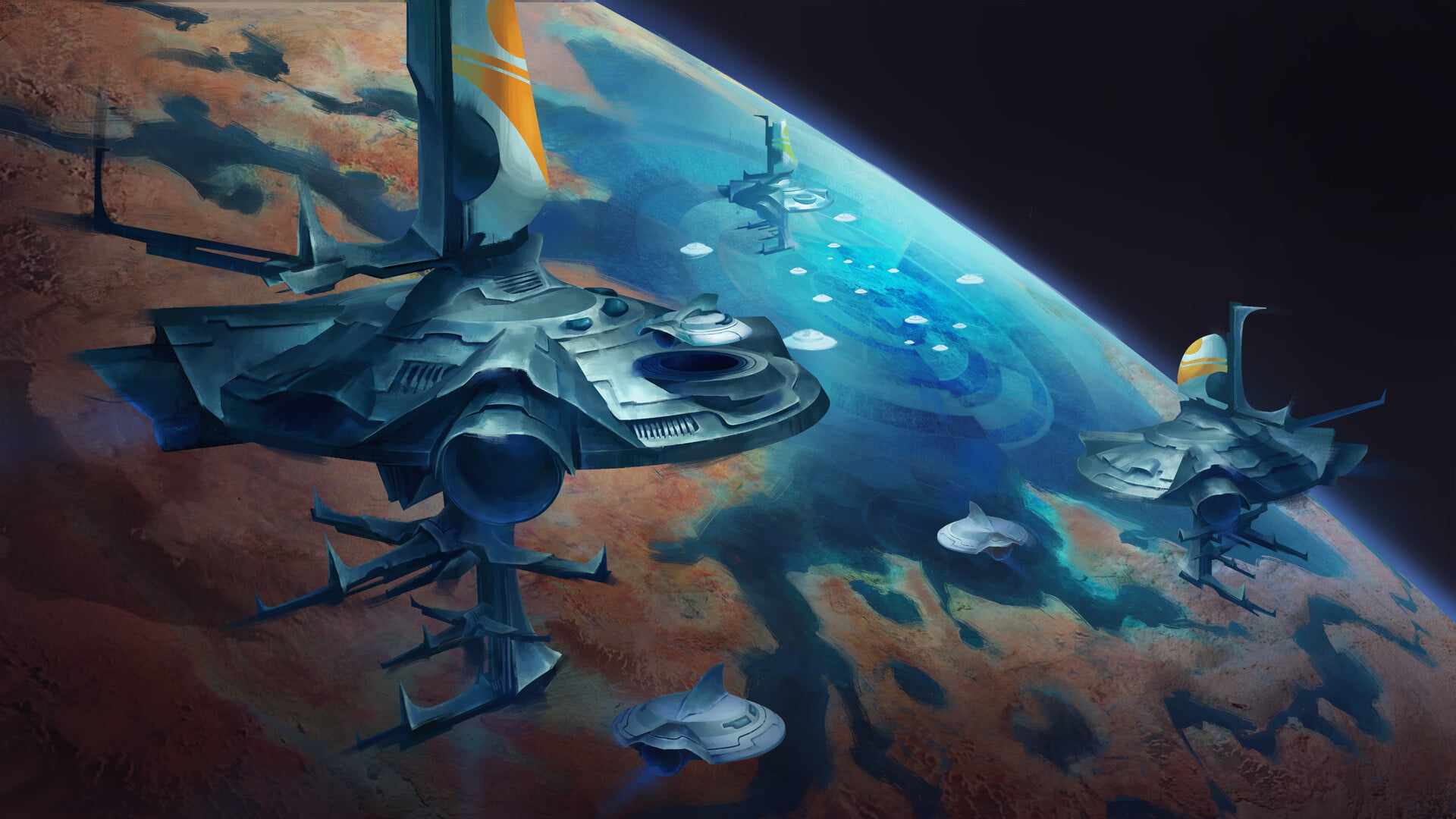Terraforming Mars: Unveiling the Path to Red Planet Habitability

Introduction:
For centuries, Mars has captivated the human imagination, with its blood-red hue and enigmatic allure. As the fourth planet from the Sun, Mars has long held a special place in our collective fascination with the cosmos. Over the years, scientists, astronomers, and dreamers have pondered the possibility of transforming Mars into a habitable world, a second home for humanity. This grand vision, known as terraforming, represents an audacious and transformative endeavor that seeks to reshape the Martian landscape, atmosphere, and climate to support human life. The concept of terraforming Mars has gained significant traction in recent years, spurred by advancements in space exploration, scientific knowledge, and the collective ambition of space agencies, private companies, and passionate individuals. While the idea of terraforming Mars may seem like the stuff of science fiction, it is rooted in scientific principles and a deep understanding of the planet’s unique characteristics.
Terraforming Mars goes far beyond the realms of traditional space exploration. It represents a paradigm shift in our approach to space colonization, as it aims to make an alien world habitable, offering the potential for long-term human settlement and the expansion of our civilization beyond Earth. The journey toward terraforming Mars is a complex and multifaceted one, intertwining science, technology, ethics, and environmental considerations. In this awe-inspiring and comprehensive blog post, we will embark on an exploration of the path to terraforming Mars, delving into the intricate scientific foundations, the challenges that lie ahead, the innovative strategies proposed, and the ethical implications of such a transformative endeavor. By unraveling the mysteries of Mars and envisioning a future where the Red Planet could become a thriving, hospitable world, we aim to ignite the imagination, inspire curiosity, and foster a deeper understanding of our place in the universe.

The Quest for Mars Terraforming: Unveiling the Cosmic Dream
The quest for terraforming Mars represents the culmination of centuries of cosmic dreams and human curiosity. Since the early days of space exploration, the notion of transforming the Red Planet into a hospitable world has captivated the imaginations of scientists, visionaries, and science fiction enthusiasts alike. The idea of terraforming Mars goes beyond the realm of simple exploration; it is a bold endeavor that aims to reshape an entire planet, turning it into a second home for humanity.
The concept of terraforming Mars gained momentum in the latter half of the 20th century, driven by scientific advancements, space missions, and a growing understanding of the planet’s unique characteristics. As our knowledge of Mars expanded, so did the realization that beneath its barren and desolate surface lies the potential for transformation. Terraforming Mars is no longer confined to the pages of science fiction novels; it is a serious scientific pursuit with the potential to revolutionize our understanding of space colonization.
Understanding Mars: A Mosaic of Desolation and Enigma
Mars, often referred to as the “Red Planet,” presents a mosaic of desolation and enigma. It is a world that, at first glance, appears inhospitable and hostile to life as we know it. However, beneath its dusty plains and towering volcanoes, Mars holds tantalizing secrets waiting to be unveiled. Understanding the unique characteristics of Mars is crucial to unraveling the complexities of terraforming.
Mars is characterized by its distinct reddish hue, caused by iron oxide, or rust, that covers much of its surface. Its thin atmosphere, composed mostly of carbon dioxide, offers little protection from cosmic radiation and extreme temperature fluctuations. However, recent discoveries of water in the form of ice caps, underground reservoirs, and even briny liquid flows have ignited hope and shed light on the potential for sustaining life on Mars.

The Science of Terraforming: Unleashing the Power of Planetary Alchemy
Terraforming Mars relies on unleashing the power of planetary alchemy, where scientific principles and processes are employed to alter the planet’s atmosphere, climate, and surface conditions. This monumental task requires a deep understanding of key scientific concepts, such as the greenhouse effect, atmospheric composition and pressure, and the availability of water.
3.1. The Greenhouse Effect: Unveiling Nature’s Atmospheric Blanket
One of the fundamental aspects of terraforming Mars is the application of the greenhouse effect. Just as Earth’s greenhouse gases trap heat and warm the planet, a similar process can be initiated on Mars to raise its temperature and create a more habitable environment. By introducing greenhouse gases, such as methane or fluorocarbons, into the Martian atmosphere, it is possible to enhance heat retention and initiate a gradual warming process.
3.2. Atmospheric Composition and Pressure: Breathing Life into the Void
The composition and pressure of the Martian atmosphere play a crucial role in determining its habitability. Currently, the thin atmosphere on Mars is incapable of supporting human life. However, by introducing gases such as nitrogen and oxygen, and gradually increasing the atmospheric pressure, it becomes possible to create an environment where humans can breathe without the need for pressurized suits.
3.3. Water on Mars: A Precious Reservoir for Planetary Metamorphosis
Water is a vital resource for sustaining life, and its presence on Mars has profound implications for terraforming efforts. While water exists on Mars in the form of ice caps, underground reservoirs, and possibly briny liquid flows, unlocking its potential requires ingenious methods of extraction, distribution, and storage. Utilizing the available water resources is essential for supporting future human colonization and enabling the growth of plant life on the planet.

Terraforming Strategies: Blueprinting a Paradigm Shift
To transform Mars into a habitable world, scientists and visionaries have proposed various strategies that involve meticulous planning and precise execution. These strategies encompass the creation of an atmosphere, the cultivation of a biosphere, the harnessing of energy sources, and the application of geoengineering techniques.
4.1. The Genesis of an Atmosphere: Crafting Mars’ Life-Sustaining Veil
Creating an atmosphere on Mars is a pivotal step in the terraforming process. This involves introducing gases into the Martian atmosphere, which would serve multiple purposes, such as increasing air pressure, regulating temperature, and protecting against harmful radiation. One proposed method is to release greenhouse gases into the atmosphere, initiating a warming trend that would trigger the release of trapped carbon dioxide from the Martian soil, further enhancing the greenhouse effect.
4.2. Cultivating a Biosphere: Seeding Life in the Barren Martian Soil
A thriving biosphere is essential for long-term sustainability on Mars. Introducing hardy plant species and microorganisms that can survive in the harsh Martian environment is a key component of terraforming. These organisms would play a crucial role in oxygen production, carbon dioxide absorption, and the creation of a stable ecosystem. Genetic engineering and synthetic biology hold promise in creating life forms adapted to Martian conditions.
4.3. Harnessing Energy Sources: Illuminating the Martian Horizon
Energy is the lifeblood of any civilization, and Mars is no exception. Harnessing energy sources such as solar power, wind power, and nuclear energy is crucial for sustaining human life, powering habitats, and fueling the terraforming process. Solar panels, wind turbines, and advanced energy storage systems would need to be deployed on a large scale to meet the energy demands of a growing Martian colony.
4.4. Geoengineering on Mars: Sculpting the Martian Terrain for Human Needs
Geoengineering techniques offer the potential to reshape the Martian landscape to suit human needs. This involves modifying the terrain, creating bodies of water, and constructing structures for human habitation. Utilizing the abundant resources available on Mars, such as minerals and regolith, along with advanced 3D printing technologies, can facilitate the construction of habitats, infrastructure, and even terraforming infrastructure itself.
The Challenges Ahead: Conquering the Uncharted Frontiers
Embarking on the journey of terraforming Mars presents a multitude of challenges that must be overcome to ensure the success of this audacious endeavor. From protecting against solar tempests to shielding against radiation and adapting to reduced gravity, addressing these challenges is crucial for the long-term sustainability and well-being of future Martian settlers.
5.1. The Magnetic Field Conundrum: Guarding Against Solar Tempests
One of the significant challenges in terraforming Mars is the absence of a global magnetic field. Earth’s magnetic field acts as a shield, deflecting harmful solar winds and protecting the planet’s atmosphere. On Mars, without such protection, solar tempests could erode the newly created atmosphere and hinder the progress of terraforming efforts. Innovative solutions, such as deploying artificial magnetic shields or utilizing natural magnetic anomalies on Mars, may be required to mitigate this challenge.
5.2. Shielding Against Radiation: Defending Life Amidst Cosmic Rays
Radiation poses a significant threat to human health and survival on Mars. The thin atmosphere and lack of a robust magnetic field leave Martian settlers vulnerable to cosmic rays and solar radiation. Shielding habitats and developing advanced radiation protection measures, such as radiation-resistant materials and innovative shielding technologies, are crucial for ensuring the well-being of future colonists.
5.3. The Gravity Dilemma: Adapting to a Lesser Pull
Mars has only about 38% of Earth’s gravity, which presents unique challenges for human physiology and long-term habitation. The effects of reduced gravity on the human body, including muscle and bone degradation, cardiovascular changes, and impaired immune function, require careful consideration. Countermeasures such as exercise regimes, artificial gravity systems, and medical interventions may be necessary to maintain the health and well-being of Martian settlers.

Technological Innovations: Pioneering Mars’ Technological Renaissance
The journey to terraforming Mars pushes the boundaries of technology and innovation. From robotic advancements and genetic engineering to 3D printing and in-situ resource utilization, a myriad of technological breakthroughs is essential for the success of this monumental undertaking.
6.1. The Role of Robotics and AI: Forging a Robotic Vanguard
Before human settlers arrive on Mars, robotic missions will pave the way, laying the foundations for future habitation and terraforming efforts. Robotic exploration missions serve multiple purposes, including resource identification, site preparation, infrastructure construction, and even preliminary biosphere development. Advanced robotics, combined with artificial intelligence (AI) systems, enable autonomous decision-making and increase the efficiency and effectiveness of these missions.
6.2. Genetic Engineering and Synthetic Biology: Crafting Martian-Adapted Lifeforms
Genetic engineering and synthetic biology offer possibilities for creating life forms that are specifically tailored to survive and thrive in the Martian environment. By modifying the genetic makeup of organisms, scientists can enhance their resistance to radiation, extreme temperatures, and low nutrient availability. These genetically engineered organisms can play a crucial role in kickstarting the Martian biosphere and accelerating the terraforming process.
6.3. 3D Printing and In-Situ Resource Utilization: Architecting Mars from the Ground Up
One of the most transformative technologies for Martian colonization is 3D printing, combined with in-situ resource utilization (ISRU). These technologies allow for the construction of habitats, infrastructure, and even terraforming infrastructure using locally available resources.
On Mars, resources such as regolith, rocks, and ice can be utilized as raw materials for 3D printing. Robotic systems equipped with 3D printers can autonomously construct habitats, creating protective structures for future settlers. This method eliminates the need to transport bulky construction materials from Earth, significantly reducing the cost and logistical challenges of building on Mars.
In-situ resource utilization complements 3D printing by extracting and utilizing resources found on Mars itself. For example, water ice can be extracted from the Martian soil or ice caps and processed into drinking water, breathable oxygen, and even rocket propellant. Utilizing these local resources not only reduces the reliance on Earth for supplies but also contributes to the sustainability and self-sufficiency of a Martian colony.
Ethical and Environmental Considerations: Guiding the Path to Planetary Harmony
As we embark on the path to terraforming Mars, it is vital to address the ethical and environmental considerations that arise from such a transformative endeavor. Balancing the pursuit of scientific progress and human exploration with the preservation of Mars’ unique ecosystem and the responsible use of resources is of utmost importance.
7.1. Planetary Protection and Preservation: Nurturing Mars’ Ecological Integrity
Mars, like Earth, has its own unique ecosystem, albeit in a dormant state. Before introducing Earth organisms and altering the Martian environment, careful consideration must be given to planetary protection and preservation. Strict protocols and measures need to be in place to prevent the contamination of Mars with terrestrial life forms and to safeguard the integrity of any potential indigenous Martian life. This ensures that Mars can be studied as a pristine environment and preserves the possibility of discovering native life forms.
7.2. The Balance between Exploration and Exploitation: Embracing Responsible Expansion
As humanity expands its presence on Mars, striking a balance between exploration and exploitation is crucial. Mars should not be treated as an unlimited resource to be exploited without regard for its long-term sustainability. Responsible practices, such as sustainable mining techniques, efficient resource utilization, and waste management systems, should be implemented to minimize the ecological footprint and preserve the planet’s natural resources.
7.3. The Mars Society and the Terraforming Debate: A Crucible of Diverse Perspectives
The question of whether to terraform Mars is not without its ethical and philosophical debates. The Mars Society, an international organization dedicated to the exploration and settlement of Mars, serves as a crucible for these discussions. It brings together scientists, engineers, ethicists, and space enthusiasts from diverse backgrounds to engage in thoughtful discourse and shape the future of Mars exploration. The society’s conferences, research initiatives, and advocacy efforts provide a platform for examining the potential benefits and drawbacks of terraforming and ensure that a wide range of perspectives are considered.
The Future of Mars Terraforming: Charting a Course to the Crimson Horizon
As we look to the future, the prospect of terraforming Mars holds tremendous potential for humanity. It is a grand vision that requires collaborative efforts, technological advancements, and innovative thinking. Several key elements will shape the future of Mars terraforming.
8.1. SpaceX and Elon Musk’s Vision: Revolutionizing Space Travel
SpaceX, led by visionary entrepreneur Elon Musk, has emerged as a driving force in advancing the vision of Mars colonization and terraforming. Musk’s ambitious plans include the development of reusable rockets, the establishment of a sustainable transportation system, and ultimately, the colonization of Mars. SpaceX’s efforts serve as a catalyst for technological innovation, international collaboration, and public interest in the quest to terraform Mars.
8.2. Collaborative International Efforts: Forging Alliances for Planetary Transformation
The endeavor to terraform Mars transcends national boundaries. It necessitates collaboration and cooperation among nations, space agencies, and private entities. International partnerships can pool resources, expertise, and funding to tackle the immense challenges of terraforming Mars. Initiatives like the International Mars Research Coalition and joint missions between space agencies foster cooperation and lay the foundation for a unified global effort toward planetary transformation.
8.3. Interplanetary Sustainability and Beyond Paving the Way for Cosmic Exploration
Terraforming Mars represents a stepping stone in humanity’s journey toward interplanetary sustainability and exploration. The technologies and knowledge gained from the process of transforming Mars can be applied to other celestial bodies, enabling the colonization and utilization of resources beyond Earth. By pushing the boundaries of scientific understanding and technological capabilities, we pave the way for a future where humanity becomes a multi-planetary species, fostering resilience and ensuring the long-term survival of our species.
Conclusion: Unleashing the Spirit of Discovery
The quest for terraforming Mars unveils the spirit of human discovery and our insatiable curiosity about the cosmos. It represents a grand scientific and technological endeavor that pushes the boundaries of what is possible. While numerous challenges lie ahead, from scientific uncertainties to ethical considerations, the pursuit of terraforming Mars reflects our collective desire to explore, expand, and ensure the long-term sustainability of our species.
As we unravel the mysteries of Mars and harness the power of science and innovation, we inch closer to the realization of this cosmic dream. Terraforming Mars is not only a scientific pursuit but also an embodiment of human ambition and resilience. It is a testament to our ability to overcome challenges, adapt to new environments, and shape the destiny of world. In the journey to terraform Mars, we not only transform a planet but also transform ourselves, forever expanding the horizons of human potential.



